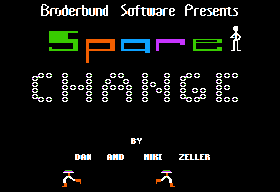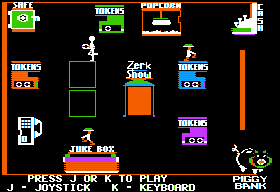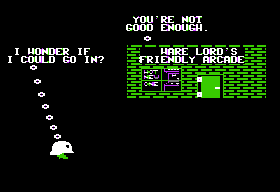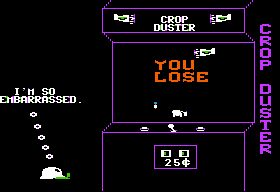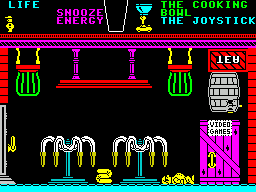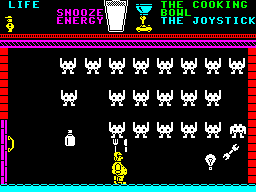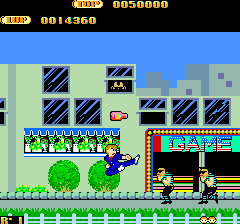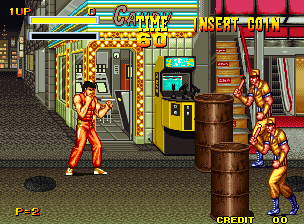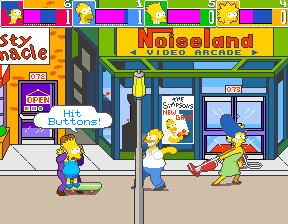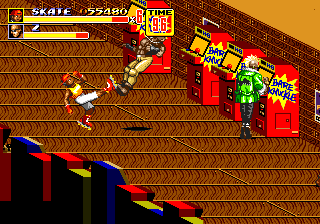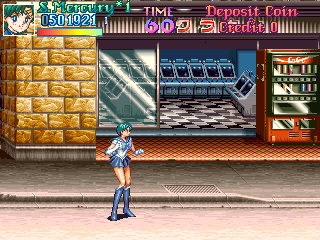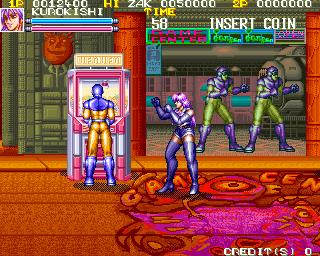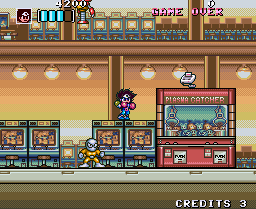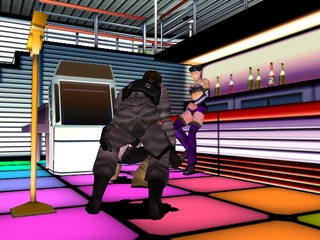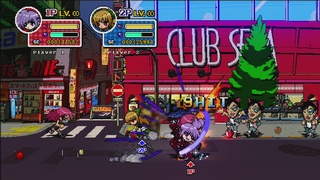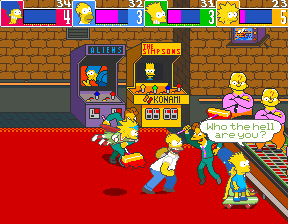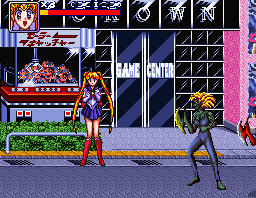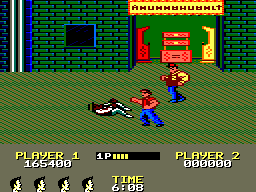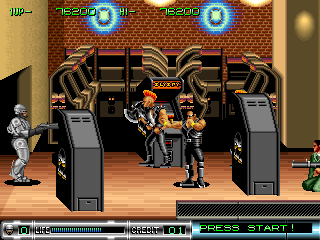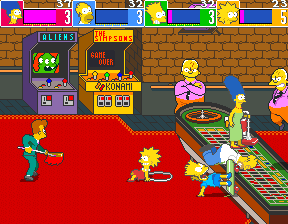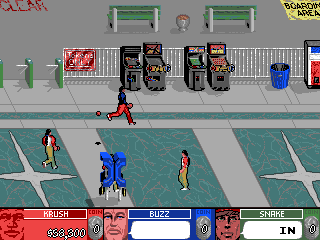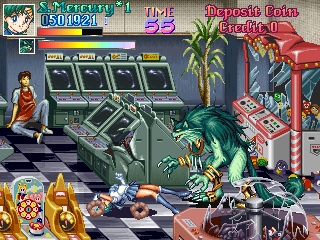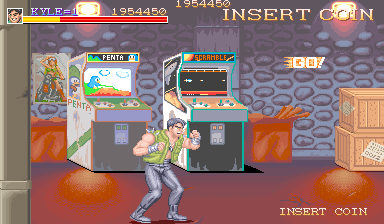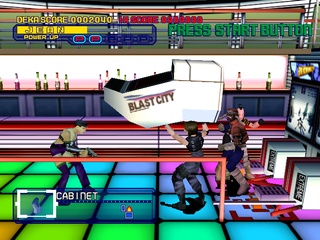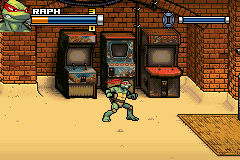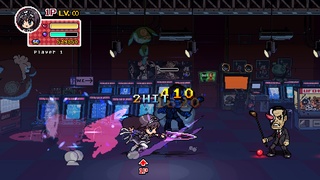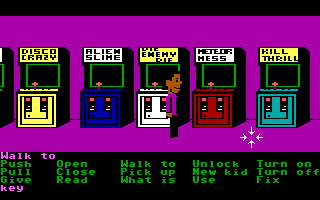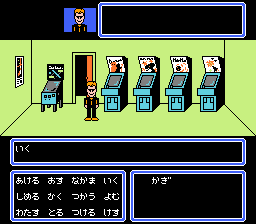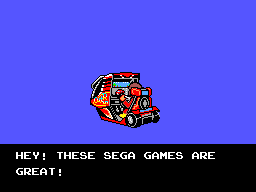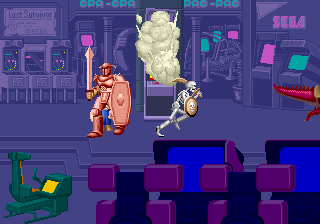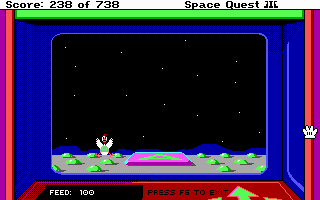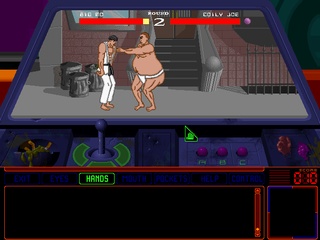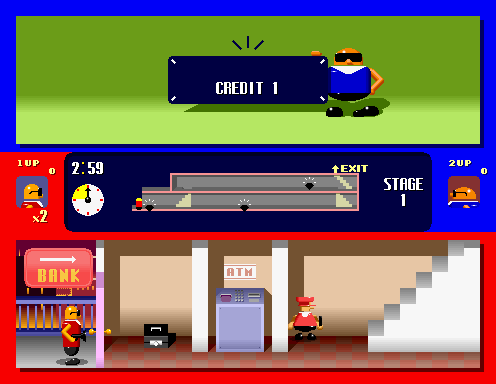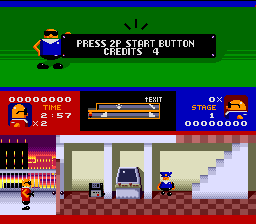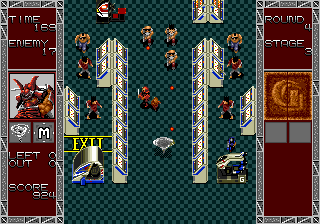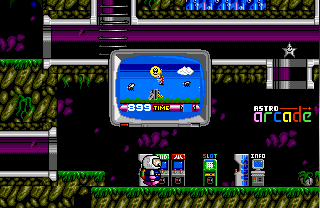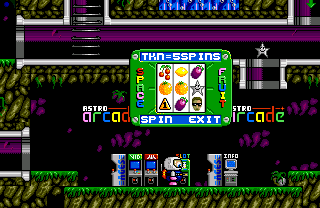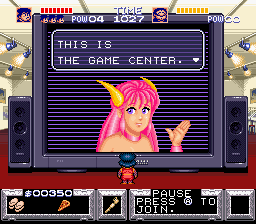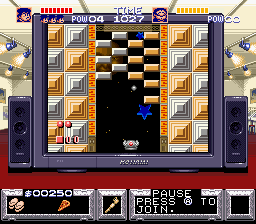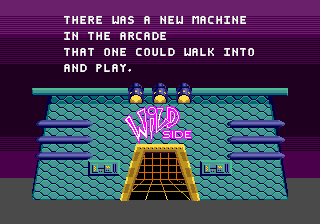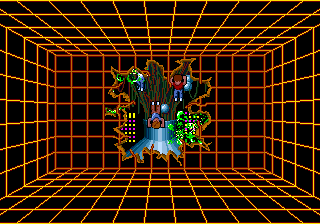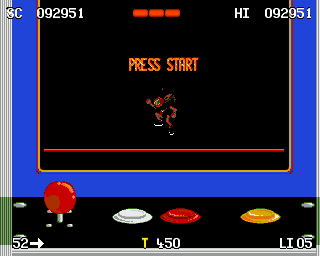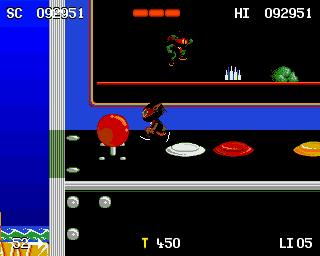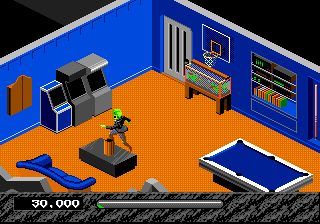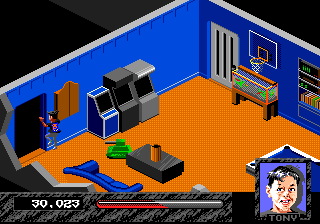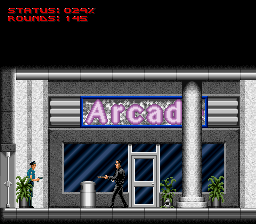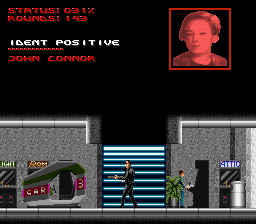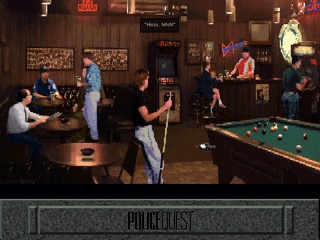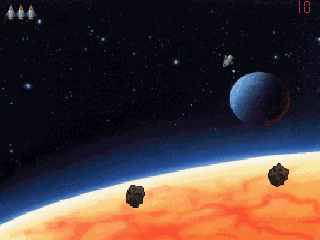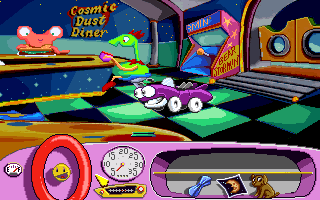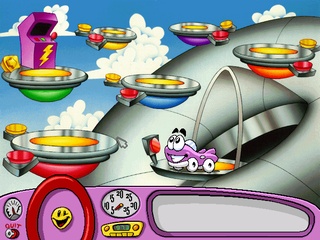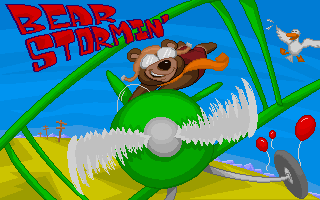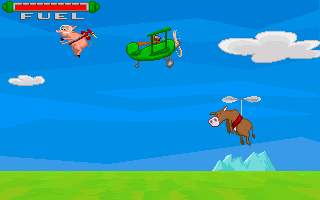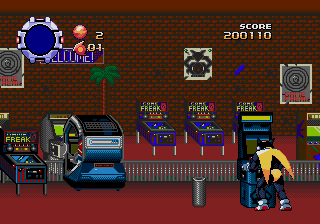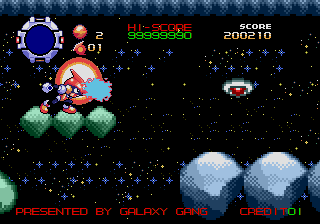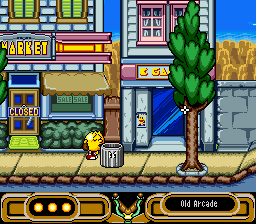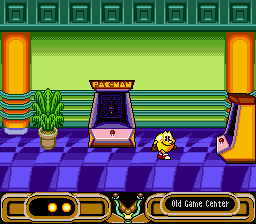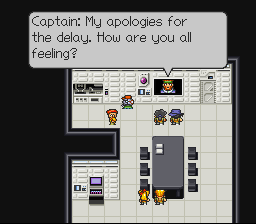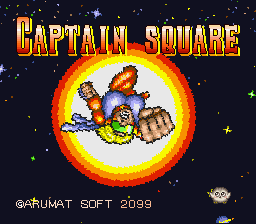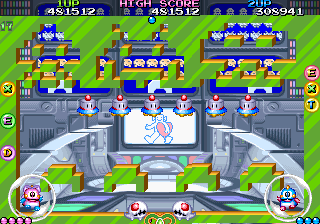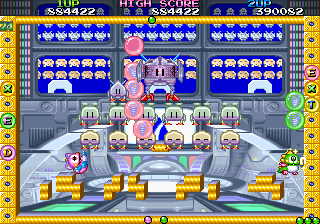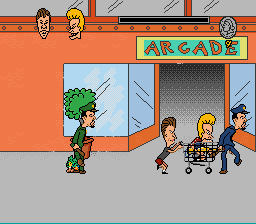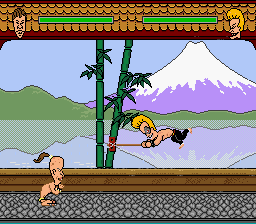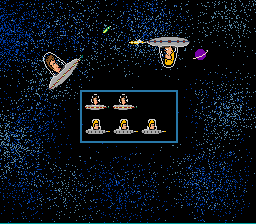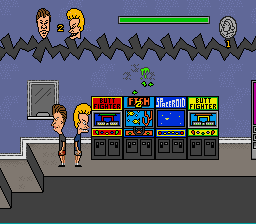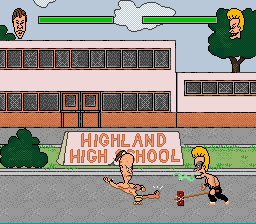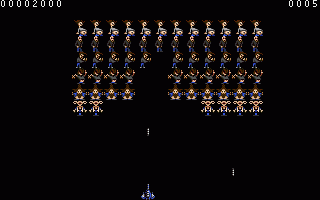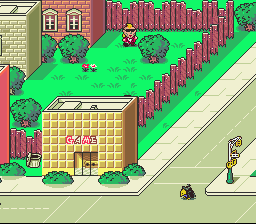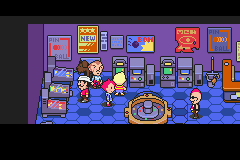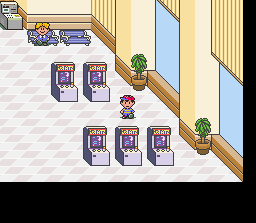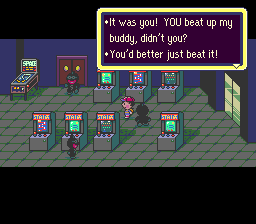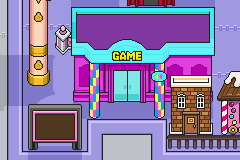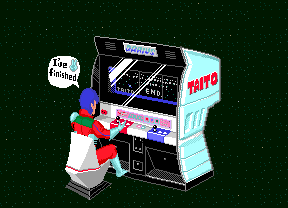
Inventories: Arcades in Video Games
|
<<< Prior Page |
There is something very intriguing about the idea of video games within video games - the sense that games have become so advanced in simulating worlds that they started simulating themselves inside of those worlds. This is especially true for arcade games, which in the past had always been the "big brother" of home entertainment. The idea to have an experience for which you had to go to a special place about twenty years ago not only in your home, but in a game you're playing in your home is just stunning. But even if they are not actually playable, it is strangely meta to see game hardware or screen displays in a game.
This is a collection of all the various ways games have incorporated arcade machines in their worlds, from single cabinets as background decoration to fully functional game centers. Note that this is not a list simply of minigame interludes - only where these games are framed as within arcade cabinets, they become eligible for this list. Also not included are retro releases and other games that are framed within an arcade-themed border themselves. Computers and consoles on which games can be played do not count either, although we've got a little surprise in that regard at the end.
Spare Change (1984)
In the early days, there wasn't a lot of storage space to spare for peripheral embellishment, and so the first video games that featured arcades usually entirely take place within it. The player takes the role of the owner of said establishment, and has to fight off mischievous little guys that keep spawning from the new machine Zerk Show. This also appears to be the only proper game in the joint, but for some reason (a specific gameplay reason, to be precise), there's no less than four token machines which spit out quarters. A safe, a cashier, a piggy bank, a telephone, a jukebox and a popcorn machine also belong to the interior furnishing. If you put money in the jukebox, it actually plays a little tune.
Arcade Boot Camp (1984)
Arcade Boot Camp has a pretty extensive intro for a 1984 Apple II game (but then again, that is also the year of Karateka): A little helmet with feet walks up to an arcade and is immediately attacked verbally for his lack of skill. He nonetheless tries his hands at a game, but fails miserably. He then enlists to Arcade Boot Camp, where there are five mini games available, most of which are simple shooting or evasion challenges. A bit more interesting are "Driver Education", which is the same as the arcade classic Night Driver, and "Chopper Practice", where you fly around and collect numbered boxes in order. "Crop Duster", the title from the intro, is not among them, though.
Pyjamarama (1984)
A seminal milestone among the countless British platform/adventure games from the Spectrum days, this one is a bit of a borderline case for the list. When you pick up a joystick in the mansion where the game takes place in, you can enter a special room labeled "Video Games". Inside, you get to play a Space Invaders clone, but it's not quite clear what the nature of this game is, as you never see the device it is played on, and you still control Pyjamarama's main character.
Sidescroller walk-bys
My Hero (Arcade)
Burning Fight (Neo Geo)
The Simpsons (Arcade)
Streets of Rage 2 (Genesis)
Pretty Soldier Sailor Moon (Arcade)
Denjin Makai (Arcade)
Shubibinman Zero (Super Famicom)
Dynamite Cop (Dreamcast)
Phantom Breaker: Battle Grounds (Xbox 360)
Gang-busting adventures in urban areas were still a quasi standard setting for beat-em-ups far into the 1990s, but it's not that easy to come up with a lot of graphical variations between levels if every other game takes place in a modern day city. Arcade machines were an efficient antidote - some interesting titles on the cabinet are enough to let the player's imagination do all the work for you - except many of these examples don't even bother with titles.
An early example of an arcade walk-by can be found already in Sega's proto beat-em-up My Hero, which feature's the arcade "Game" with a very American sign font but only from the outside. The first and possibly the most obscure example of visible arcade machines in this category, Target Renegade is one of the semi-inofficial sequels of Technōs' Renegade published by European licensee Ocean. You still only walk by the entrance here and cannot see too much of it.
The early Neo Geo brawler Burning Fight features a nameless machine right in the beginning. But even though the title is unreadable, it is obviously a three-player Beast Busters cabinet, with its three SMG design lightguns on the control panel.
The titular mechanized law enforcer in Robocop 2 for arcades walks through an area that looks like a storehouse for arcade machines. All bear the Data East logo, but most are turned to the side or back. Only a few show the title of the game stored here, a garbled font apparently saying Sly Spy, another game by Data East. The machines are actually dangerous, though, as enemies pick up the cabinets and toss them at the hero.
Konami's The Simpsons arcade game features the Noiseland Video Arcade in the background of the Springfield street in the first stage, but the Simpsons don't enter it. But later in Moe's bar (which for some reason is huge here) there can be seen a cabinet of Konami's The Simpsons arcade game - way to smash down the fourth wall. There is also a violet cabinet called "Aliens", which shows a typical Matt Groening alien on the screen, whom Marge scares off with a Giger alien parody costume.
The Simpsons (Arcade)
Brute Force by Leland features a bunch of arcade machines in a subway station. The scale is too small to read anything on them, but they appear to represent other games by the same company. Especially the two on the right of each pair look like Ironman Stewart's Super Off-Road, with its three steering wheels on color coded bezels. All of them can be smashed to get the money out of them. Also destructible are the "Bare Knuckle" arcade machines in Streets of Rage 2 (reminder: the series is actually called Bare Knuckle in Japan), but therein you can find odd stuff like food.
One of the most frequently revisited arcade in games is Sailor Moon's Game Center Crown, a popular hangout for the friends in the animated series. In the first SNES brawler, you pass by it right in the beginning. In the arcade game it's rather far in, but as a reward you get to go inside and fight the giant monster kitty, who has slashed up the UFO catcher, presumably to get the stuffed toys for free.
Bishōjo Senshi Sailor Moon (SNES)
Violent Storm's arcade machines come unusually late in the game - in the final stage. But as a reward for your persistence, they include an actual Konami classic. Scramble is lovingly recreated, featuring a faithful scene from the game on screen. The other cabinet is "Penta", a game that doesn't exist, but instead Penta is the star of the MSX game Antarctic Adventure. There were some arcade products starring him, like redemption games or slot machines, but no video games.
Denjin Makai in contrast has you once again passing an arcade right at the start. The very first enemy doesn't even pay attention to you because he is so immersed in the UFO catcher machine by the entrance. Also dominated by an ufo catcher machine is the arcade in the Satellaview exclusive Super Famicom title Shubibinman Zero.
Even though the traditional beat-em-up genre fell out of popularity at that time, there were a few holdouts that tried to translate similar mechanics into 3D, one of which is Sega's Dynamite Deka series. In the second game, known as Dynamite Cop in the West, you start in a cruise ship captured by pirates, where you enter a bar with a bunch of arcade machines. Two are a bit off to the side and you never get a good look at them, but they appear to be a skiing simulation. The third is a Blast City, Sega's generic candy cabinet around the time, which you can even pick up and use as a weapon; if you throw it at an enemy, it explodes.
Both Dynamite Deka games also feature playable classic Sega arcade games (Deep Scan in Die Hard Arcade, Tranquilizer Gun in Dynamite Cop, and a simulation of the old mechanical game Periscope in the PlayStation 2 version of the first game), but those are bonuses selected outside of the main games. In the Game Boy Advance version of 2007's TMNT, the Ninja Turtles have a selection of machines in their sewer hideout.
The indie game revolution brought back many genres that seemed all but forgotten, including all the tropes that go with them. The 2013 doujin brawler Phantom Breaker: Battle Grounds has its chibi anime heroines strolling right through Akihabara, where they reach a Club Sega arcade, with the "G" sneakily hidden behind a tree, as of course it is not licensed. There are a lot of machines inside, with special points of interest being an SMG lightgun shooter in the back and an UFO catcher with very sad-looking stuffed toys in it, but none of the games are recognizable as a reference to anything specific.
Maniac Mansion (1987)
The Edisons do have a magnificent mansion, and one of its many rooms is a fully equipped home arcade. As the first game where an arcade shows up as one of many locations to visit, you cannot actually play any of them, but you can make one of the kids play and check the high score table afterwards for a secret combination. The available games are "Video Fever", "Disco Crazy" (with a disco ball and a guy in a white leisure suit as side art in the VGA version), "Alien Slime", "Die Enemy Die", "Meteor Mess" (which was later adopted as the title for a 3D fan remake of the game) and "Kill Thrill" (oddly reminiscent of an infamous unreleased Playstation game). Thanks to good old Nintendo censorship, the titles referencing death are missing in the NES version, replaced by the intriguing "Tuna Diver", a play on the silly "tuna head" insult found elsewhere in the game and a makeshift softened variant on the initially intended title "Muff Diver", from before the artist became aware of Nintendo's content regulations regarding sexually suggestive language. In the Famicom port, none of the titles are readable, but they have some neat minimalistic art, and there's also a pinball table on the left.
Alex Kidd: High Tech World (1989)
The whole goal of the hero in one of the lesser Alex Kidd games is to reach High Tech world, an awesome arcade full of the greatest Sega games. Of course, it hasn't always been this way, as it was repurposed from a Japanese anime tie-in. After winning the game, we see Alex Kidd mounting a sit-down OutRun cabinet, but here ends the journey for the player - Alex Kidd does not share any of his quarters.
Golden Axe (1989)
So how could a Conan The Barbarian style sword & sorcery adventure feature an arcade? By including a fourth wall breaking mindfuck ending. After defeating the evil Death Adder, the heroes and a bunch of monsters are shown breaking out of their own game, ready to run wild in the real world. Naturally, none of the sequels ever pick up on that twist. The arcade named "Video Game Doydoy Eirou!" features a machine labeled "Opaopa" and an ad on the wall for Sega's Last Survivor.
Space Quest series (1989-1995)
Depending on whether or not you count Pyjamarama, the distinction of first playable arcade machine in a full game of a different genre goes to Sierra's point-and-click adventure Space Quest III. In it, you can stop for a session of "Astro Chicken", a simple shooter that in itself would be unremarkable if the enemies weren't flying space chicken. The sequel featured the variant "Ms. Astro Chicken". Space Quest V skipped the arcade intermission, but the final series entry brought it back with a bang, featuring the sketchy Street Fighter parody "Stooge Fighter 3".
Bonanza Bros. (1990)
Bonanza Bros. is technically just another walk-by example, but the way of its occurence is particularly noteworthy. In the original arcade version, the two burglars first break into a bank, with an ATM positioned right at the entrance. Perhaps trying to make the protagonists less like criminals, the Genesis turns the bank level into a "Company", replacing the ATM with a sole arcade machine. The money box next to it is also missing, making way for a floppy disk. All other console versions still have the ATM, but the European 16-bit computer ports are modeled after the Genesis version.
Gain Ground (1991)
Gain Ground is Sega's second example of Genesis-exclusive arcade machines. In the arcade version, Sega's Gain Ground sends you to all kinds of different time periods to live through various ages of war, but only the Genesis port adds a present day part to the action puzzler with miniature charm. This includes a screen that takes place in an arcade. It's just decoration and only one screen in the entire game (which is why the screenshot is the same on both side, in case you were wondering).
Vac Suit Jack (1991)
Vac Suit Jack is a completely obscure Amiga fighter - so obscure that not even the big Amiga databases know what kind of release it had, if any. All that is known of it is a demo image. Very early on, the Bomberman lookalike protagonist (the game openly gives credit to Bomberman and Super Mario World) happens upon the Astro Arcade, where he can play "Bug Bash" on a tiny window at the center of the screen, where you're collecting fruit while avoiding other bugs. There are a few more cabinets, but the only two that aren't out of order are a slot machine and a shopping terminal.
The Legend of the Mystical Ninja (1992)
The first and one of the only few localized installments of Konami's long-running Ganbare Goemon series has several parlors in each town that send you through 3D mazes or let you play a round of whack-a-mole. The amusement park in stage 3 goes one step further and introduces a game center where you can play through the first stage of the original Gradius, next to a really boring Breakout clone.
The Japan-only sequel Ganbare Goemon 2 has the amusement part hidden behind an underground passage, with new distractions like a mode-7 racing game (on foot and only against the clock) and a Penguin Wars clone. The game center here only features a portion of Xexex - apparently Konami realized that no one wanted another bad Breakout variant. The fourth SNES title even contains the whole game of Time Pilot '95, except that is not presented as an arcade in the game, but unlocked after clearing the main game to 100% completion.
Kid Chameleon (1992)
Similar to Golden Axe, the entire world of this shapeshifting mascot platformer made in USA by Sega Technical Institute is contained within an arcade machine. But here the hero enters from the outside world in order to rescue other children that are held hostage in the new virtual reality arcade attraction. The science is a bit wonky, though - in the end, the kids are freed by bursting through the holo deck grid to reveal the circuitry behind.
Zool (1992)
Late in his Chupa Chups advertainment game, the "Ninja of the Nth Dimension" reaches a kind of amusement park stage, where he can find a huge arcade machine. As he hops on the start button, he discovers that the game is starring himself, running forward as the player has to make the "real" Zool step on the jump and fire buttons to evade spikes and take out enemies. There is no control over the joystick, making this an obscure forerunner of the endless runners of the smartphone era. It's not endless though - eventually Zoom gets to collect a bunch of extra lives for the main game. In the Amiga version this is followed by an insurmountable patch of spikes, whereas in the SNES port the game just ends there.
Haunting Starring Polterguy (1993)
Haunting Starring Polterguy is an odd little game where you play as a ghost to possess tons of regular household items in order to scare the living hell out of a nasty rich family, who keeps moving from house to house in order to escape you. The hobby room in their third home includes three arcade machines. Polterguy can enter the one in the center to emerge as a little green tank and shoot virtual missiles at his victims for a limited time.
Terminator 2: Judgement Day (1993)
In the film Terminator 2: Judgement Day, John Connor is seen playing After Burner in an arcade before being extracted by Arnie to save him from the T-1000. Naturally (well, maybe not naturally, cause there are other tie-ins that don't have the scene), the location is also visited in the SNES and Genesis game of the same title. The T-800 doesn't play video games, but he does enjoy shooting them all to bits. Since the scale is rather small, the pixel artists could only fit really short, generic or nondescript titles on the cabinet, like "Attic", "Car 3", "Light" or "ROM". The arcade itself likewise is just called "Arcade".
Police Quest: Open Season (1993)
Police Quest would eventually follow Space Quest by featuring a playable arcade game. But it's only a lone Asteroids clone in a small local bar and doesn't quite have the charm of "Astro Chicken".
Putt-Putt series (1993-1997)
All the Humongous Entertainment games are made for small children and therefore contain several minigames to avoid straining their target audience's attention span. Two of these take the form of arcade machines. In Putt-Putt Goes to the Moon, the titular sentient little car enters the Cosmic Dust Diner on planet Earth's natural satellite, which has the game "Bear Stormin'". The title is a homage to the Atari 2600 classic Barnstorming by Activision. As fatty bear, you steer an old-fashioned biplane while collecting baloons to recharge fuel and startle flying animals, which include propeller-driven cows and pigs with jetpacks. Every once in a while you can fly through a barn, but have to take care not to crash into the building.
Putt-Putt Goes to the Moon (IBM PC)
The second is found in Putt-Putt Travels Through Time, of course in the future. The way to the machine is a complicated network of teleporters - apparently it is more complicated to reach an arcade game in the future than actually playing it. The game is a 3D squash variant where you uncover pictures of scenes from Putt-Putt's various adventures.
Pulseman (1994)
Game Freak's electric hero has the ability to enter electronic devices, where he walks through worlds of computer chips or psychedelic virtual realities. The final stage takes him back to Japan and to a classic 80s arcade. Inside, he follows his enemy into the game "Galaxy Gunner" by the fictitious company Waruyama. The game apparently is supposed to be a horizontally scrolling shoot-em-up, but Pulseman hops over asteroids in his usual platformer manner. He makes his way through multiple stages and even fights a boss you'd see in a Gradius game at the end.
Pac-Man 2: The New Adventures (1994)
Another actually playable arcade game can be found in Pac-Man 2: The New Adventures. No wonder, as the original arcade classic was hardly a large burden to emulate on the 16-bit systems. The arcade (its sign is partially obstructed by a tree, but in an emulator or other tool you can find out that it is indeed named "Game") is a bit empty with only two cabinets, and only Pac-Man is playable initially, but you can find three hidden cartridges to unlock either Ms. Pac-Man (on the SNES) or Pac-Man Jr. (Genesis).
Live-A-Live (1994)
In Squaresoft's fairly unknown time-traveling RPG, you happen to witness a boy cracking the high score at an arcade game, after which he offers you to try it. The game is "Captain Square", published by Arumat Soft in 2099. Despite the flashy title screen, it's just a series of fights in the normal game engine, only playing as the titular super hero instead of your current party.
Bubble Symphony (1994)
One of the few bigger variations this late sequel adds in comparison to its forebear is the option to choose the next zone after each boss, all of which have a distinct background theme. One of them is called "TV Machine", but it is obvious that it is meant to be some kind of surreal Invader House full of Space Invaders screens. Some of the stage walls also form Invader shapes or simulate the barriers that used to protect the player ship in Taito's first big arcade hit. The boss has an armada of aliens under its command, which fly in the characteristic formation.
Beavis and Butt-Head (1994)
In their 16-bit console outing, MTVs moronic bastards need to make their way through an entire mall with various shops to enter, and if you're not paying attention, it may seem like just another walk-by. But the game actually has a currency system, as Beavis and Butthead can snatch coins from payphones and other devices and buy healing food - or they can just squander their money for "Butt Fighter" (yeah, the game doesn't even pretend to be trying for anything more witty than the TV series), where the two anti-heroes battle each other in ridiculous fighting game parody costumes with even more ridiculously limited moves. Depending on which cabinet you use, there are even two different backgrounds, but that is about the only variation here. Only available in two-player mode is "Spaceroid", a simple Spacewar! clone where the two lunatics get to shoot at each other from flying saucers. "Streets", "Fist" and "Fish 2" are unfortunately unplayable, as is the row of pinball machines in between.
In the two popular idiots' Windows point-and-click adventure from a year later, you can find "Kill 'em", apparently a fighting game, but it's just a sole, non-playable cabinet in a store.
Beavis and Butt-Head (SNES)
Universe (1994)
Universe is a fairly unremarkable science fiction point-and-click adventure by Core Design, but its metropolitan setting contains a bar/arcade, with several machines occupied by strange aliens and an unremarkable Space Invaders clone, unremarkably called "Invaders", for you to play. The major difference is that the aliens you shoot from your space ship are all humanoid, which makes the mission feel just a little bit uncomfortable.
(Images taken from Hall Of Light and freed from shameful watermarking. Seriously guys, get rid of the watermarks, your site could be a great resource.)
Mother series (1994-2006)
Earthbound is all about childhood adventure, and maybe part of childhood is not feeling comfortable at the shady arcade around the corner because it's a haven for teenage delinquents and secretly run by the mob. At any rate, Ness and his friends don't get to play any of the games in the Onett arcade, but need to beat up a bunch of Pogo Punks to get through and meet a creepy gangster named Frank in the back. The cabinets in the arcade are tiny and all look the same, but on the screens you can clearly make out Donkey Kong and Space Invaders lookalikes running. There is a (friendlier) arcade in the Twoson department store, too, where all the cabinets appear flipped backwards for some reason.
Earthbound (SNES)
The long-awaited sequel Mother 3 features an arcade in New Pork City. Here, you can make Lucas play a game, but that only results in him twitching a bit in front of the machine and the game telling you that it made you happy.
|
<<< Prior Page |
